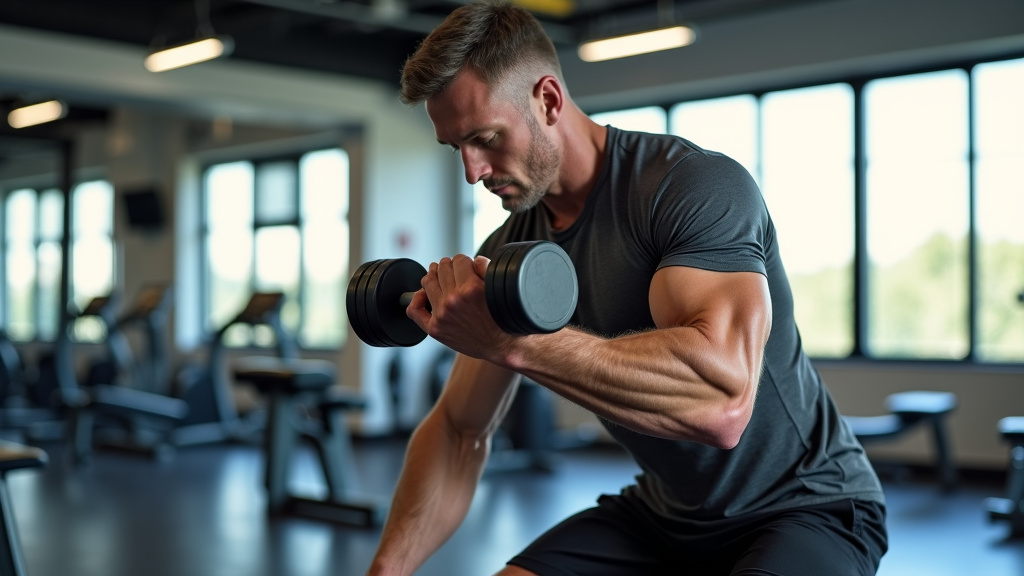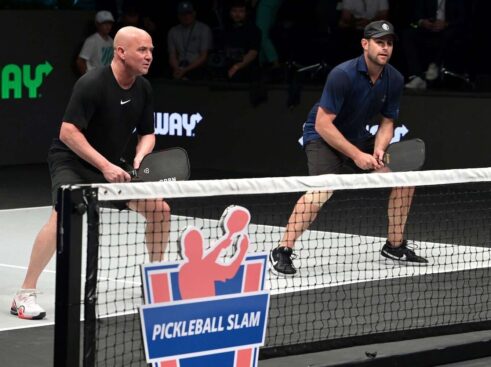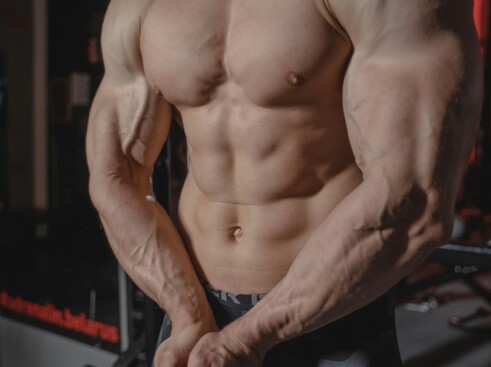Want to build those impressive, well-defined arms you’ve always wanted? The hammer curl might just be your new best friend. This powerful bicep exercise has been a cornerstone of arm training for both professional athletes and fitness enthusiasts – and for good reason.
What makes hammer curls special is their unique ability to target multiple arm muscles simultaneously. While traditional bicep curls focus mainly on the biceps brachii, hammer curls engage your brachialis and brachioradialis too, according to research from PowerliftingTechnique. This means more muscle activation and better overall arm development.
Whether you’re a seasoned lifter or just starting your fitness journey, hammer curls offer remarkable versatility. You can perform them with dumbbells, cables, or even resistance bands, making them perfect for both gym and home workouts. Plus, their neutral grip position makes them gentler on your wrists and elbows compared to standard curls.
Understanding Hammer Curls: Muscles Worked and Benefits

Hammer curls stand out as one of the most effective exercises for comprehensive arm development. The neutral grip position, which mimics the motion of swinging a hammer, engages multiple muscle groups simultaneously.
The exercise primarily targets the brachialis and brachioradialis muscles, along with the biceps brachii. This three-muscle activation builds the foundation for stronger, more defined arms.
Primary Muscles Targeted
The brachialis, located between your biceps and triceps, functions as your primary elbow flexor. When developed properly, this muscle adds significant width to your upper arms, enhancing muscular definition.
The brachioradialis, running along the forearm, receives substantial stimulation during hammer curls. This muscle contributes to both elbow flexion and forearm rotation, supporting everyday activities and athletic performance.
The biceps brachii, particularly the long head, receives focused activation through the neutral grip position. This engagement pattern differs from traditional bicep curls, providing distinct muscle-building benefits.
Key Benefits of Hammer Curls
A significant advantage of hammer curls is their ability to enhance grip strength. The neutral grip position effectively challenges your forearm muscles, improving your ability to handle heavy weights in other exercises.
Athletes benefit from the functional strength developed through hammer curls. The exercise strengthens muscles used in sports-specific movements, from swinging a bat to throwing a punch.
Wrists experience less strain during hammer curls compared to traditional bicep curls. The neutral grip position allows for natural joint alignment, making it ideal for those with wrist sensitivity.
Training Applications and Variations
For optimal results, incorporate hammer curls into your routine 2-3 times weekly. This frequency allows adequate recovery while promoting consistent muscle growth and strength gains.
Whether you’re a bodybuilder seeking balanced arm development or an athlete focusing on functional strength, hammer curls merit a place in your training program. The exercise’s versatility accommodates various fitness goals.
Consider alternating between seated and standing variations to target muscles from different angles. Each position provides unique benefits while maintaining the core advantages of the hammer curl movement.
| Fitness Level | Goal | Repetitions | Sets | Rest Period |
|---|---|---|---|---|
| Beginner | Muscular Endurance | 12-20+ | 2-3 | 30-60 seconds |
| Beginner | Muscular Hypertrophy | 6-12 | 3-5 | 60-90 seconds |
| Beginner | Strength | 1-5 | 2-6 | 2-5 minutes |
| Advanced | Muscular Hypertrophy | 6-12 | 3-6 | 60-90 seconds |
| Advanced | Strength | 4-6 | 4-6 | 2-3 minutes |
Variations of Hammer Curls for Diverse Workouts
Ready to take your bicep training to the next level? Let’s explore some powerful hammer curl variations that can transform your arm workouts and stimulate new muscle growth. Each variation offers unique benefits while targeting your arms from different angles.
Seated Hammer Curls
The seated hammer curl variation eliminates the tendency to use momentum, forcing your biceps to do all the work. This strict form helps isolate the target muscles more effectively than standing variations.
When performing seated hammer curls, maintain an upright posture with your back against the bench. This position naturally prevents the swinging motion that often occurs during standing curls.
This variation is particularly effective because it helps maintain proper form throughout the entire movement. The seated position reduces stress on your lower back while allowing you to focus purely on the bicep contraction.
For optimal results, perform this exercise with controlled movements and avoid leaning back as you lift the weights. This technique ensures maximum muscle engagement and reduces the risk of injury.
Even lighter weights can feel challenging when proper form is maintained in the seated position, making it an excellent option for both beginners and advanced lifters.
Alternating Hammer Curls
Alternating hammer curls allow you to focus on one arm at a time, helping identify and correct any strength imbalances between your arms. This variation enables greater concentration on each individual curl.
During alternating curls, you can lift slightly heavier weights since you’re only moving one dumbbell at a time. This increased load can lead to greater strength gains in your biceps, brachialis, and forearm muscles.
As you perform alternating hammer curls, keep your non-working arm steady. This practice enhances overall stability and ensures proper form throughout the exercise.
The alternating pattern also helps prevent fatigue, allowing you to maintain proper form for more repetitions compared to standard hammer curls where both arms work simultaneously.
According to research published in the Journal of Shoulder and Elbow Surgery, this variation particularly engages the brachialis muscle, which can add significant thickness to your arms.
Cable Hammer Curls
Cable hammer curls offer unique benefits thanks to the constant tension provided by the cable machine. Unlike dumbbells, cables maintain resistance throughout the entire range of motion, leading to increased muscle activation.
The cable variation allows you to customize the angle of resistance, making it possible to target your biceps from different positions. This versatility helps create new growth stimuli for your muscles.
When performing cable hammer curls, start with a lighter weight to master the movement pattern. The continuous tension from the cables makes the exercise more challenging than traditional dumbbell curls.
Focus on maintaining a stable core and keeping your elbows fixed at your sides throughout the movement. This technique ensures proper form and maximizes the benefits of the constant tension provided by the cables.
For enhanced muscle growth, try incorporating drop sets with cable hammer curls – this technique is particularly effective due to the easy weight adjustment on cable machines.
Incorporating Hammer Curls into Your Arm Workout Routine

Ready to enhance your arm development? Hammer curls effectively build impressive biceps and forearm strength when properly integrated into your workout routine.
For optimal results, incorporate hammer curls 2-3 times per week into your arm or upper body training sessions. Your muscles need adequate recovery time between workouts to grow and strengthen.
Follow this proven framework for sets and repetitions: For strength, perform 4-6 sets of 4-6 reps with heavier weights. For muscle building, aim for 3-4 sets of 8-12 reps with moderate weights.
Structuring Your Arm Workout
Begin your arm workout with compound movements before moving to isolation exercises like hammer curls. This ensures you have sufficient energy for the challenging compound lifts while maintaining quality during curls.
For a comprehensive arm routine, alternate between hammer curls and tricep exercises in a superset fashion. This approach maximizes efficiency and maintains muscle engagement throughout your workout.
According to research from The American Sports and Fitness Association, proper form is crucial – keep your elbows close to your sides and avoid swinging or using momentum.
Consider incorporating variations like seated hammer curls or cross-body hammer curls to target your arms from multiple angles. This variety prevents plateaus and ensures complete muscle development.
Remember to gradually increase the weight or volume over time. Start with lighter weights to perfect your form, then progressively add weight as your strength improves.
Optimal Training Parameters
Select a weight that allows you to complete all reps with proper form – the last few should be challenging but manageable. If you’re sacrificing form, reduce the weight.
Rest periods between sets should be 60-90 seconds for muscle building goals. This provides sufficient recovery while maintaining an optimal training stimulus.
For enhanced results, focus on the eccentric (lowering) portion of each rep. Taking 2-3 seconds to lower the weight increases muscle tension and can accelerate growth.
Track your progress by logging weights, sets, and reps. This ensures you’re consistently challenging yourself and making improvements each week.
Common Mistakes to Avoid
Don’t rush through your reps – quality trumps quantity with hammer curls. Each rep should be controlled and deliberate.
Avoid using momentum by swinging your body. Keep your core tight and focus on isolating your arm muscles throughout the movement.
Many beginners train arms daily, which is counterproductive. Remember that muscles grow during recovery, so maintain the recommended 2-3 sessions per week.
| Goal | Repetitions | Sets | Rest Period |
|---|---|---|---|
| Strength | 1-6 | 2-6 | 2-5 minutes |
| Hypertrophy | 6-12 | 3-4 | 30-90 seconds |
| Endurance | 12-20 | 2-3 | ≤30 seconds |
| Power | 1-5 | 3-5 | 2-5 minutes |
Common Mistakes to Avoid When Performing Hammer Curls
Even a seemingly straightforward exercise like hammer curls requires proper form for optimal results. Here are the crucial mistakes to avoid for maximizing gains and preventing injuries.
Using Momentum Instead of Muscle Power
One of the most common mistakes is swinging your body to lift the weights. This momentum-driven movement reduces muscle engagement and places unnecessary stress on your lower back.
To fix this, start with a lighter weight that allows you to maintain control throughout the entire movement. Keep your core engaged and maintain a stable, upright position.
Remember, controlled reps with lighter weights yield better results than compromising form with heavier ones. Your biceps will thank you for it.
Floating Elbow Syndrome
When your elbows drift away from your sides during the curl, you reduce the exercise’s effectiveness and risk shoulder strain.
Focus on keeping your upper arms locked against your sides throughout the movement. If you can’t maintain this position, you’re likely using weights that are too heavy.
Think of your elbows as being glued to your ribs – this mental cue helps maintain proper form.
Insufficient Range of Motion
Partial reps might help you lift heavier weights, but they limit full muscle development. Many lifters don’t lower the weights completely or fail to curl all the way up.
Start each rep from a full extension position, with your arms straight down at your sides. Curl the weights up until you feel a complete contraction in your biceps.
Control the movement, especially during the lowering phase, as this eccentric portion is crucial for muscle growth.
Improper Grip Position
A common error is changing your grip during the movement, which reduces the exercise’s effectiveness in targeting the brachialis and forearm muscles.
Maintain a neutral grip position throughout the entire movement – imagine holding a hammer with your palms facing each other. Never rotate your wrists during the curl.
Your grip should be firm but not white-knuckle tight, as this can lead to unnecessary forearm fatigue.
Racing Through Repetitions
Performing hammer curls too quickly reduces their effectiveness and increases injury risk. Speed isn’t your friend here.
Take two seconds to lift the weight and four seconds to lower it back down. This timing maintains constant tension on the muscles.
| Phase | Duration (seconds) |
|---|---|
| Lifting (Concentric) | 2 |
| Pause | 1 |
| Lowering (Eccentric) | 4 |
Focus on feeling the muscle work through each phase of the movement rather than rushing to complete your set.
Maximizing Gains: Nutrition and Recovery for Bicep Development

Essential Nutrients for Muscle Growth
Building impressive biceps requires more than just performing endless sets of curls. Research from the Journal of the International Society of Sports Nutrition demonstrates how proper nutrition directly impacts muscle protein synthesis and recovery.
Protein is your primary ally in muscle development, with research suggesting a target intake of 0.8 to 1 gram per pound of body weight daily. For a 150-pound individual, this translates to 120-150 grams of protein distributed across meals.
Complex carbohydrates play a vital role in replenishing glycogen stores depleted during intense bicep workouts. Aim for about 40% of your daily calories from quality carb sources like brown rice, sweet potatoes, and whole grains.
Strategic Protein Timing for Recovery
Your muscles are most receptive to nutrients immediately after training. Research confirms that post-exercise nutrition is critical for muscle recovery and adaptation, making this window essential for protein consumption.
Fatty fish like salmon and sardines provide both protein and omega-3 fats, which may help reduce muscle soreness and support growth. Include these protein sources 2-3 times weekly in your meal plan.
For optimal recovery, consume 20-30 grams of protein within 30 minutes after your bicep workout. This timing helps initiate the muscle repair process when your body needs it most.
Preventing Overtraining Through Smart Recovery
Monitor your body’s signals – persistent muscle soreness, decreased strength, and unusual fatigue indicate you’re pushing too hard. Allow your biceps at least 48 hours between intense training sessions.
Hydration is crucial in preventing overtraining. Consume at least eight 8-ounce glasses of water daily, increasing intake on workout days to support muscle function and recovery.
Quality sleep is essential when training intensely. Aim for 7-9 hours nightly, as this period is when your body releases growth hormone and performs most muscle repair work.
Supplementation Strategies
While whole foods should form the foundation of your nutrition plan, specific supplements can support bicep development. Whey protein offers a convenient way to meet your protein requirements, especially post-workout.
Consider adding branched-chain amino acids (BCAAs) to your supplement regimen. These essential amino acids help reduce muscle soreness and support protein synthesis during recovery.
Creatine monohydrate has substantial research supporting its effectiveness for muscle growth and strength gains. A standard dose of 5 grams daily can help maximize your bicep training results.
| Protein Intake | Supplement Type | Benefits | Recommended Dosage |
|---|---|---|---|
| 1.2g per pound of body weight | Whey Protein | Supports muscle protein synthesis and recovery | 20-30g post-workout |
| 40% of daily calories | Creatine | Increases strength and power | 5g daily |
| 0.8 to 1g per pound of body weight | BCAAs | Reduces muscle soreness and supports protein synthesis | As needed during workouts |
Mastering the Hammer Curl: Building Strength and Definition
Mastering the hammer curl is a fundamental technique for developing impressive biceps and functional arm strength. The neutral grip position effectively targets the brachialis and brachioradialis muscles while minimizing joint stress, making it an essential addition to your training arsenal.
Proper form – keeping elbows tucked, maintaining controlled movements, and avoiding momentum – creates the foundation for optimal muscle activation and growth. Athletes who perfect these fundamentals consistently achieve superior results in both strength and aesthetics.
The versatility of hammer curls, from standard dumbbell variations to cable-based alternatives and advanced modifications, offers numerous ways to challenge your muscles and prevent plateaus. Begin with lighter weights to master proper technique before progressively increasing the load.
Building impressive arms requires more than exercise selection – it demands dedication to proper form, consistent progressive overload, and patience during muscle adaptation. By incorporating hammer curls strategically into your routine, you’ll establish a foundation for long-term strength and muscle development.
Armed with these insights, you’re ready to transform your training into results. Your dedication to mastering the hammer curl will enhance both your strength and physique, creating the powerful, well-defined arms you’re working toward.







